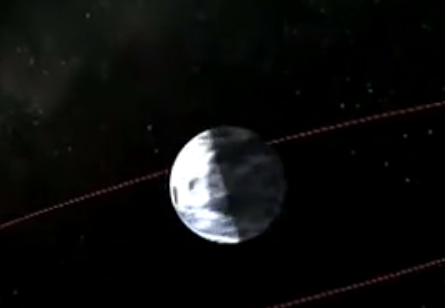By taking accurate measurements of the distance between the Earth and the Moon,
經過精確測量地球與月球之間的距離,
day after day, year after year, for nearly four decades, an incredibly precise map of the Moon's orbit has been produced.
日復一日,年復一年,經過了將近40年,一個難以置信的精確的月球軌道圖已經完成。
But the results have thrown up something very odd.
然而結果提出了一些非常奇怪的現象。
The actual orbit of the Moon is different to that predicted by Newton.
月球的實際運行與牛頓的預測有所不同。
It turns out that simple Newton's laws of gravity really don't answer all of the questions.
結果很簡單,牛頓的萬有引力定律實際上不能回答所有的問題。
For the data that existed, it was good.
對于已經存在的數據,它是對的。
Newton really had a good formula.
牛頓確實提出了一個好的公式。

But, as we get better and better data,
但是,隨著我們得到越來越多的數據,
if you use Newton's law of gravity to predict where the Moon should be, then the Moon is in the wrong place.
如果你用牛頓的萬有引力定律來預測月球所處的位置,那么月球所處的位置就不對了。
Peter's results disagree with Newton's by about ten metres.
Peter所得到的結果與牛頓的預測相差有10米的距離。
That may not sound much, but it means Newton got it wrong.
聽起來好象不多,但這意味著牛頓錯了。
You've got to explain your observations.
你要對你的觀測進行解釋。
And Newton's gravitational theory just doesn't do it any more.
牛頓的引力理論恰恰沒有給出進一步的解釋。
The observations are so accurate that we need something else.
觀測非常精確,我們需要其它的解釋。











